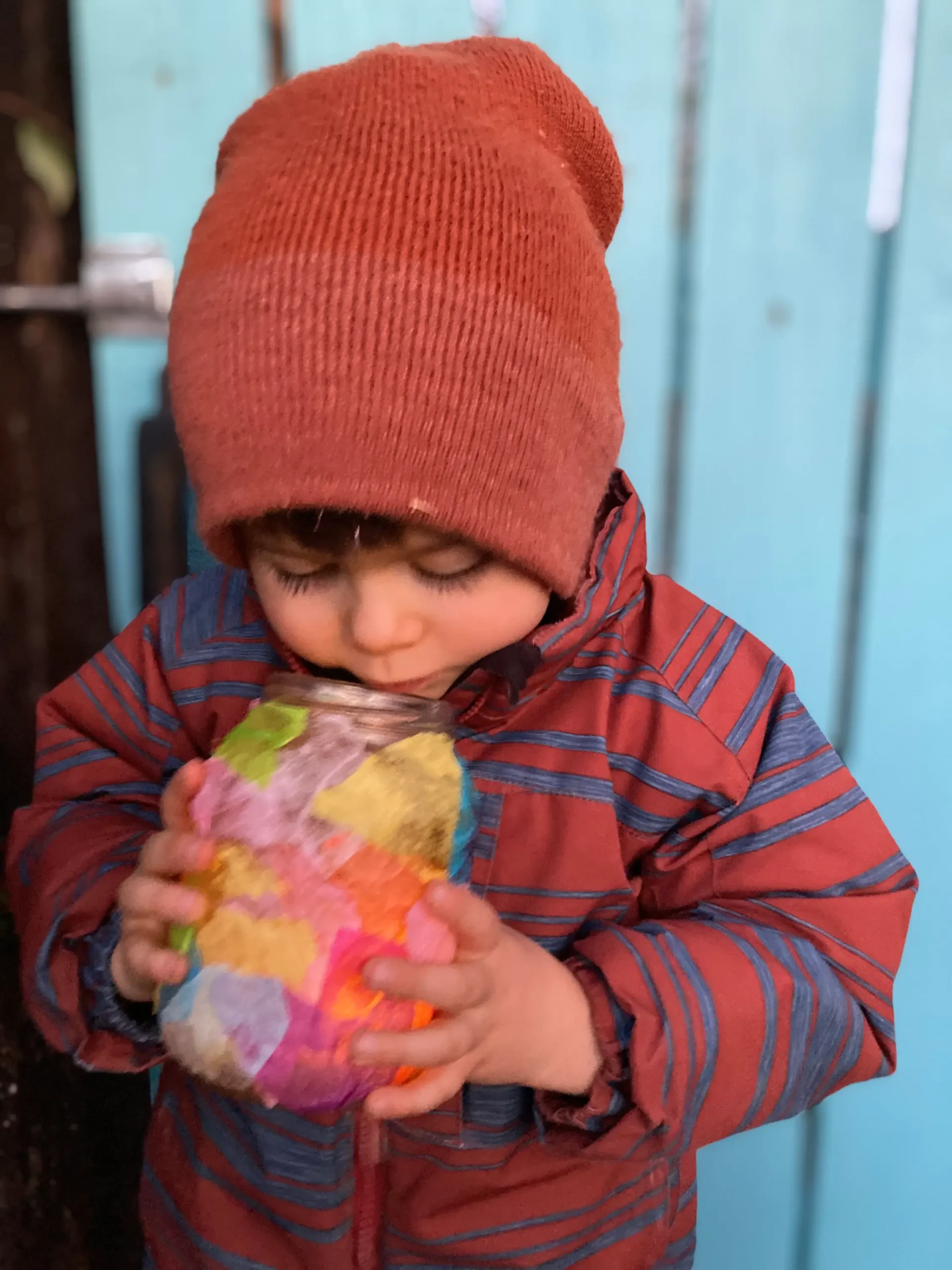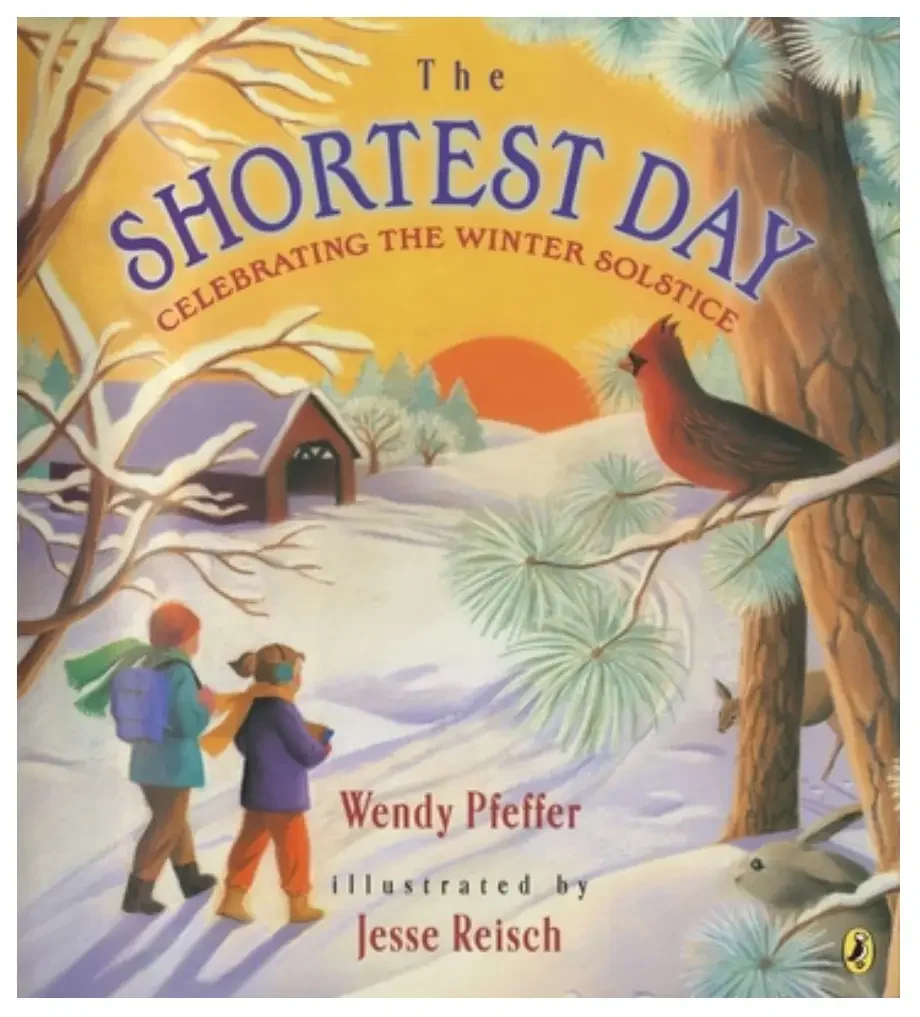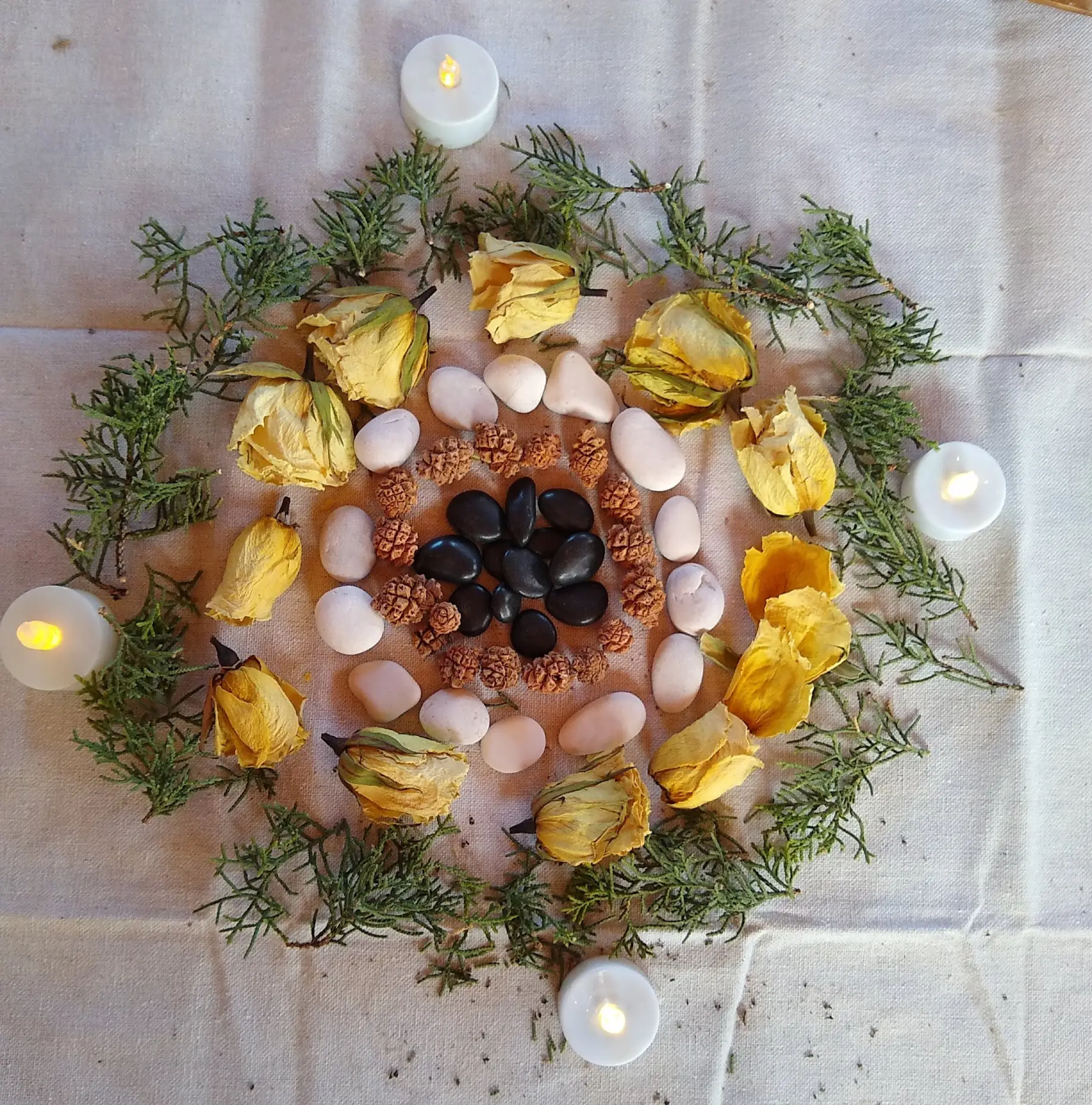Courtesy photo: Make art with loose parts and tea light candles.
A time to slow down and connect with nature
By Aurora Hvidsten
I grew up here in Santa Fe, the parents of two east coast transplants—one who grew up Catholic, one who grew up Protestant in a predominantly Jewish neighborhood—both who forayed beyond their childhood religions to find spirituality in the desert Southwest. As December came around, we walked canyon road, ate latkes, celebrated SinterKlaus with a Dutch neighbor and decorated Christmas cactuses with friends. I learned about various cultures and traditions and enjoyed celebrating them all.
Yet one tradition sticks out in my mind and it is one that feels more soft and slow in my memory: the Winter Solstice.
Held typically between December 20–22, the winter solstice marks the beginning of winter and the longest night of the year. Historically, the solstice was celebrated by cultures the world over as they learned to make sense of the planet and its seasonal changes by studying the light and shadows. Before ancient people understood that the planet rotated around the sun, the beginning of winter was a fearful time, with light disappearing, crops dying and the earth becoming cold and barren.
Once people found ways to track the subtle changes in light and shadow, people began to make sense of the difference in light from month to month and were able to mark the winter and summer solstice, as well as the spring and fall equinox. The shortest day of the year was no longer a source of fear but a cause for celebration and cultures worldwide found meaningful ways to mark this special time of year.
Fast forward a few thousand years and we still find meaning in celebrating the return of the light during the first month of winter, as well as many other religious and secular holidays. The holidays are special and full of wonder, but can undoubtedly be stressful, fast paced and often consumer oriented. There are parties and gift exchanges and suspense that keeps your kids awake all night! We dodge illnesses and scramble for childcare during school breaks and hustle across airports with tired children and it can be a lot. And, for many, the holidays can be a painful time, not joyous in its routines or forced celebrations.

Courtesy photo: Aurora’s child looking at their solstice lantern.
So, why take the time to celebrate one more thing during an already packed time of year? Think of it as a pause or a deep breath. Let the solstice be a “turning in.” A slowing down. A celebration without a party or a gift. It is learning about our earth and its pure, natural wonder. This one night, celebrated by ancestors the world over, a cry of joy for the return of longer days.
The solstice is marked on our family calendar at home, just as it was when I was a child. We read Wendy Pfeffer’s The Shortest Day, a children’s book about the solstice and choose a special way to light our darkest nights (this book has ideas for celebrating the solstice, tracking the light throughout the month of December, keeping shadow journals and more) One year we made a simple glow lantern using a glass jar, tissue paper and glue (or mod podge), and wire (or pipe cleaners), which we now use every year. At sunset we take our glow lantern on a neighborhood walk or to a special outdoor spot after the sun has set. Other ways to celebrate the solstice could be eating dinner by candlelight, taking a walk with other glowing objects such as glowsticks, camping lanterns, or jars filled with fairy lights.
You could make a family poem about the solstice or collect wishes for the coming year in a jar, little bits of future light to look forward to.
Another idea is to measure shadows at noon—maybe people in your family or a tree or permanent object—and do so again on the spring equinox, summer solstice and fall equinox. Keep a shadow journal to track the changes throughout the year.
Turning our attention to the solstice helps children tune into the rhythms of nature, especially at a time when nature may not feel as fun or as exciting to explore; bugs and crawling creatures are tucked away, flowers and trees are asleep for the winter, there are few hours of daylight for outdoor play after school. But teaching our children to take time to notice these small changes in nature can have lasting effects beyond the solstice. It can teach them to notice and to wonder, to marvel at something as simple as the changing light throughout the year. It can teach children to slow down and to rest, to find their own way of hibernating.

Courtesy photo: Children on the annual solstice walk.
Children tend to operate on our time and for many of us time is a precious resource. There is never quite enough of it to get things done and that tends to lead to adults who need to stick to a schedule. Children feel our hurried pace even when it clashes with their own sense of time and need to slow down and take it all in.
When asked the question,“What does ‘soon’ mean?” children in my preschool classroom replied with answers like “It’s like when you order something and you have to wait for the truck to come” and ”It means when your mom comes back to pick you up.” Children experience time much differently than adults do and we could all benefit from meeting children in their slower paced worlds. Alison Clark, author of Slow Knowledge and the Unhurried Child talks about the possibility of going ‘sideways’ with children and says “these side ways are not the same thing as taking a step back, that slowing down is not just a romantic idea of going back to an unproductive era… on the contrary, it is about taking time to think about what matters, about gaining depth, about preparing for unpredictability… the fastest way from A to B may very well be a straight line, but that may not necessarily be the line that prepares one for real life or for the life that we wish to be real.”
Let’s allow ourselves to operate on children’s time, nature’s time, the time of long quiet nights and unfolding seasons. As I remember the treasure that was the solstice as a child, I know it is a gift I can pass along to my own child. This one night can instill a lifetime of learning to appreciate the dark nights and simple joys of this beautiful earth.

Courtesy photo: “The Shortest Day” book teaches about the solstice and has activity ideas.
Aurora Hvidsten is a long time preschool and prekindergarten teacher at Arts & Sciences, as well as a parent to a 6 year old child.


